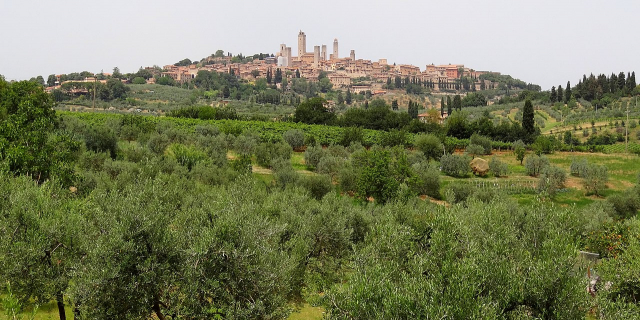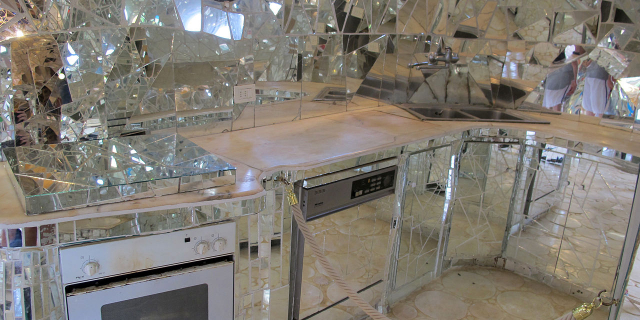Civita di Bagnoregio is an outlying village of the comune of Bagnoregio in the Province of Viterbo in central Italy. It lies 1 kilometre (0.6 mi) east of the town of Bagnoregio and about 120 kilometres (75 mi) north of Rome. The only access is a footbridge from the nearby town, with a toll introduced in 2013. Because of the toll, communal taxes were abolished in Civita and nearby Bagnoregio. And because of its unstable foundation that often erodes, Civita is famously known as "the dying city". It is one of I Borghi più belli d'Italia ("The most beautiful villages of Italy").
Civita di Bagnoregio was founded by the Etruscans more than 2,500 years ago. Formerly there were five city gates to access the ancient town of Civita, nowadays instead, Porta Santa Maria (known as Porta Cava, as well) is the main gateway of the city. It is also possible to enter the town of Civita from the badlands valley through a tunnel carved into the rock.
The layout of the whole town is of Etruscan origin, based on a cardo and decumanus orthogonal street system according to the Etruscan and Roman use, while the entire architectural cladding is of medieval and Renaissance origin.
There are numerous traces of Etruscan civilisation in Civita, especially in the San Francesco Vecchio area: a little Etruscan necropolis was found in the cliff located in the area below Belvedere di San Francesco Vecchio. The cave of St Bonaventure (where it is said that Saint Francis healed the little Giovanni Fidanza, who later became Saint Bonaventure) is also an Etruscan chamber tomb.
The Etruscans made Civita (whose original name is unknown) a flourishing city, thanks to its strategic position favourable for trade and thanks to its proximity to the most important communication routes of the times.
Many traces of the Etruscan period are still suggestive spots: the so-called Bucaione, for example, is a deep tunnel that goes through the lowest part of the city and gives access to badlands valley directly from the town.
In the past, many chamber tombs were visible. They were dug at the base of Civita’s cliff and nearby tuff walls and, over the centuries, they were destroyed by several rockfalls. Indeed, the Etruscans themselves had to face problems of seismic activity and instability, like the earthquake of 280 BC.
When the Romans arrived in 265 BC, they took up and carried on the rainwater drainage and the stream containment works that were first started by the Etruscans.
Civita (or City) was the birthplace of Saint Bonaventure, who died in 1274.[1] The location of his boyhood house has long since fallen off the edge of the cliff. By the 16th century, Civita di Bagnoregio was beginning to decline, becoming eclipsed by its former suburb Bagnoregio.[2]
At the end of the 17th century, the bishop and the municipal government were forced to move to Bagnoregio because of a major earthquake that accelerated the old town's decline. At that time, the area was part of the Papal States. In the 19th century, Civita di Bagnoregio's location was turning into an island and the pace of the erosion quickened as the layer of clay below the stone was reached in the area where today's bridge is situated.[citation needed]
Bagnoregio continues as a small but prosperous town, while the older site became known in Italian as La città che muore ("The Dying Town"). Civita di Bagnoregio has only recently been experiencing a tourist revival.[citation needed]
CNN in January 2020 associated the "over-tourism" with the mayor deciding to charge a minor fee for entry, which increased publicity and subsequently attendance. CNN also noted that the town had more feline inhabitants than its 12 human residents.[3]
The only access is a footbridge from the nearby town, with a €1.50 toll introduced in 2013 and increased in August 2017 to €3 on weekdays and €5 on Sundays and public holidays.[4] Civita had 40,000 visitors in 2010 and was estimated to attract 850,000 visitors in 2017.[4] Due to the toll, communal taxes were abolished in Civita and nearby Bagnoregio, making Bagnoregio the only town in Italy without communal taxes.[4]
































Add new comment